Open Sorcery: Sea++ is an expansive text-based adventure game that demands and rewards attention, logic, and thoroughness. It’s one of the very few games paradigm-shifting games that changed the way I look at the genre.
Type: Single-player
Genre: Adventure, Text,
Interactive Fiction
Developer: Abigail Corfman
Publisher: Open Sorcery Games
Release date: 25 Jan, 2021


Introduction
Open Sorcery: Sea++ is the sequel to Open Sorcery, now a series of text-adventure games. I have not played the first game, nor any of Abigal Corfman’s smaller games before, but that doesn’t seem to have prevented me from enjoying this. In fact, I can say with certainty that this is my favourite game of those I’ve reviewed for this website!
It’s an extremely dense and demanding game, in the best way possible – there are many puzzles, many rules to discover, and you’ll likely have to take several pages of notes and simple map drawings to get through it. Moreover, several puzzles have many solutions, though most of them may not align with the character you want to be. It took me over 30 hours to do a very solid playthrough (doing the vast majority of the content, sometimes repeatedly to find better solutions), but you can probably do it in 15 if you just want to reach the finish line (not recommended), and much longer if you want to map everything the game has to offer.
There are certainly some similarities to The Witness, in the sense that you go through several different areas, some of which have completely different rules for you to discover (through logic and cataloguing), but with common themes throughout (like the tarot card games). It is, however, very different from the Witness in that this is a verbal game. It’s not about clean abstract puzzles, but about messy (and sometimes ambiguous) language. This sometimes work against the game, but the design is very good most of the time.
The writing is also great, varied, and perhaps importantly, compassionate. It is not perfect, but it is certainly some of the best writing I can remember in a video game!
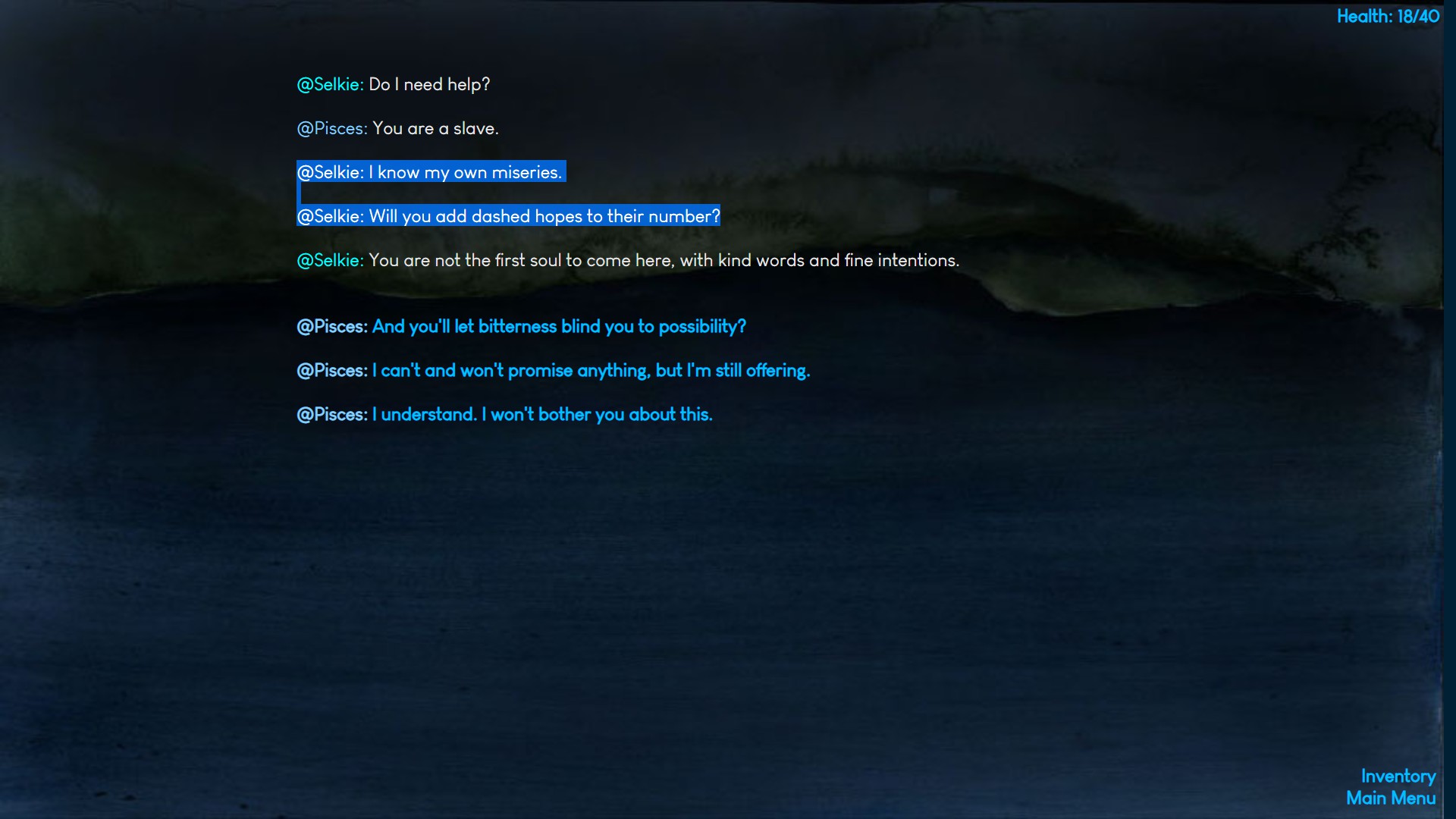
Basic Gameplay & Structure
I need to stress right away that this is not your typical adventure game. I’ve played a few LucasArts-inspired games (that is what the point n’ click adventure genre is nowadays), and I’ve never really been into them. At best, they had some nice dialogues; at worst, they required you to click every pixel and to combine a toothbrush with a fishing net to fix your washing machine.
This is completely different, and it kind of opened up a whole genre of games that I want to explore (more on that later). Most of the puzzles are actually very logical, although its linguistic foundation can lead to some frustration (I’d recommend a walkthrough or, best of all, a friend to get through these situations). In general, you’ll need to start an area by just exploring everything. In this phase (of entering a new area), there will be many elements, some which, some not, which you need to get a feel for. Find the obstacles, find the characters, find the puzzles, find the themes. Only after this will you start making connections between the various elements and how they may be used to solve puzzles.
For example (spoilers ahead, but really, the first area is a tutorial and not so important to spoil), the very first area has a shop (with an evil shopkeeper), 3 ghosts, 3 shipwrecks, and a few other elements throughout. First of all, you’ll need to map out the area (roughly, at least) and find the ghosts and the ships to make the link between them. Nothing will make sense before you explore.
You also collect spells and “essences” throughout the game, which can be used in different ways on different people and objects. These work mostly through logic and suggestion (like using Order to appease an orderly character, or maybe Chaos to defeat them, or just use Death every time you want someone’s item) and are constant throughout the game, with each area then having specific mechanics.
There are also a variety of different puzzles and tasks. There are letter soups (mostly to find essences), there are riddles, there are navigational puzzles, there are tarot mini-games, and many more that are area-specific. There’s really quite a lot, that all I’ll say for the sake of brevity. But they all fit together seamlessly.
Also, one important point is that it is not the kind of puzzle you can think about in the shower. The clues are spread far a wide, and is not something you think deeply about. Rather, it is about rereading old clues and trying to find a new reading, typically some detail you ignored because it wasn’t useful yet, not useful in the previous context.
I’ll divide the game into 3 main parts, with a smaller one: the first part, and interlude, the second part, and the end game.
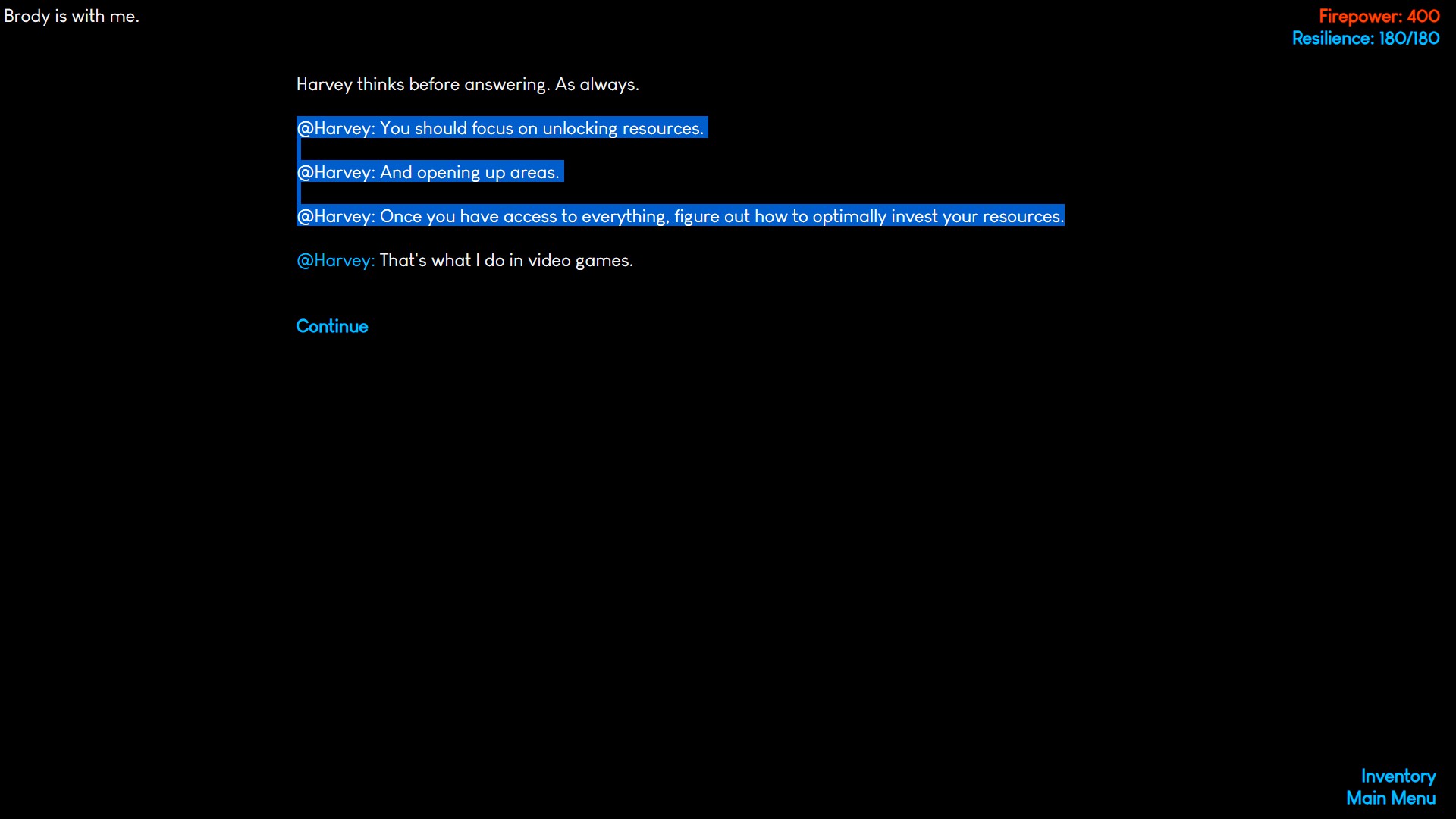
Part 1 – the Depths
The first part of the game was my favourite. This is when you first understand the basic rules of the game, and there are maybe 5 or 6 different areas to go through. The areas are also quite different from one another.
One of my favourites areas involved:
(1) learning how to listen to a troll so that you could move around his house to gather alchemy items without running into him and being eaten;
(2) deducing which alchemy ingredient you needed from text descriptions and pictures from old books;
(3) mapping out where you could find various kinds of fish depending on the surrounding environment and method of catching, based on fragmented information given the various characters throughout the area;
(4) and a bunch of more stuff.
I hope this is enough to give you an idea of what the puzzles are. The troll, for example, required you to listen in a square, to learn if the troll was in any adjacent square. You could also make noise elsewhere to attract it.
For the alchemy ingredients, you didn’t even know what they were or where to get them until you fully explored the level. Maybe one square had some text about “rays”, every square had something about “fish”, but what does it mean? Only by finding the alchemy recipes AND the picture book linking the ingredients with the ray names does it start making sense. Then, you’ll also realize that you can figure out the ingredient from the descriptions. Then you’ll start puzzling about which potions you should make.
This is also a great example, since you can easily kill the troll. There are several ways to do so, depending on what you have “at hand” or which rules you already understand. But there is a much tougher solution where you don’t need to hurt anything – and this is a common theme throughout the game. If you’re willing to put in the effort, you have little need to kill or hurt.
It took me around 15 hours (although I often revisited the areas later).
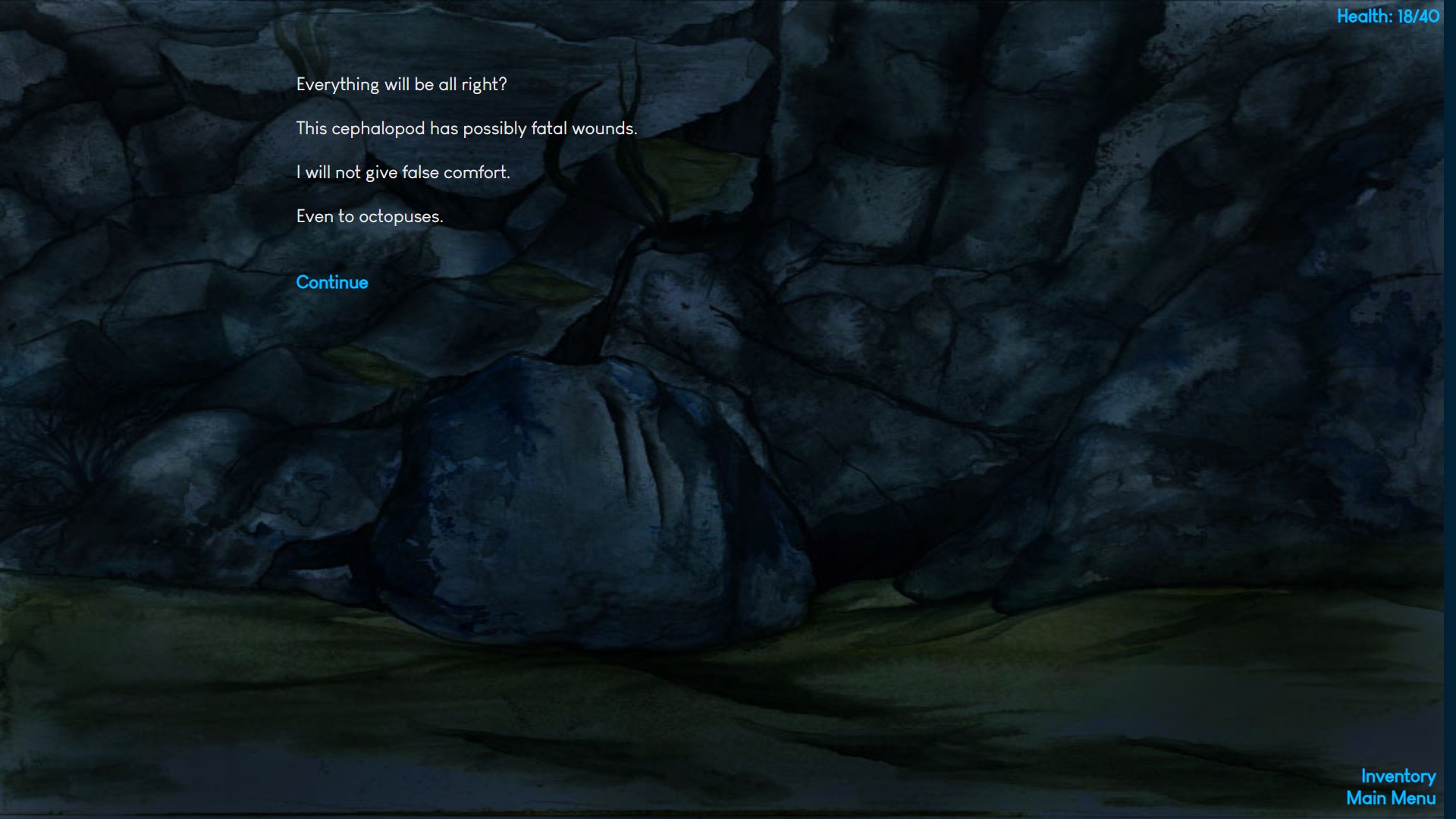
Interlude – a Murder Mystery
This is an area about bureaucracy and courtly politics, with contrived succession rules and where everyone wants to kill each other.
There are also many many forms to be filled and rejected.
This area is mostly self-contained and could almost be its own game, albeit a shorter one. You can’t really leave the area, so there is less uncertainty about which items you may need, making it a more focused experience.
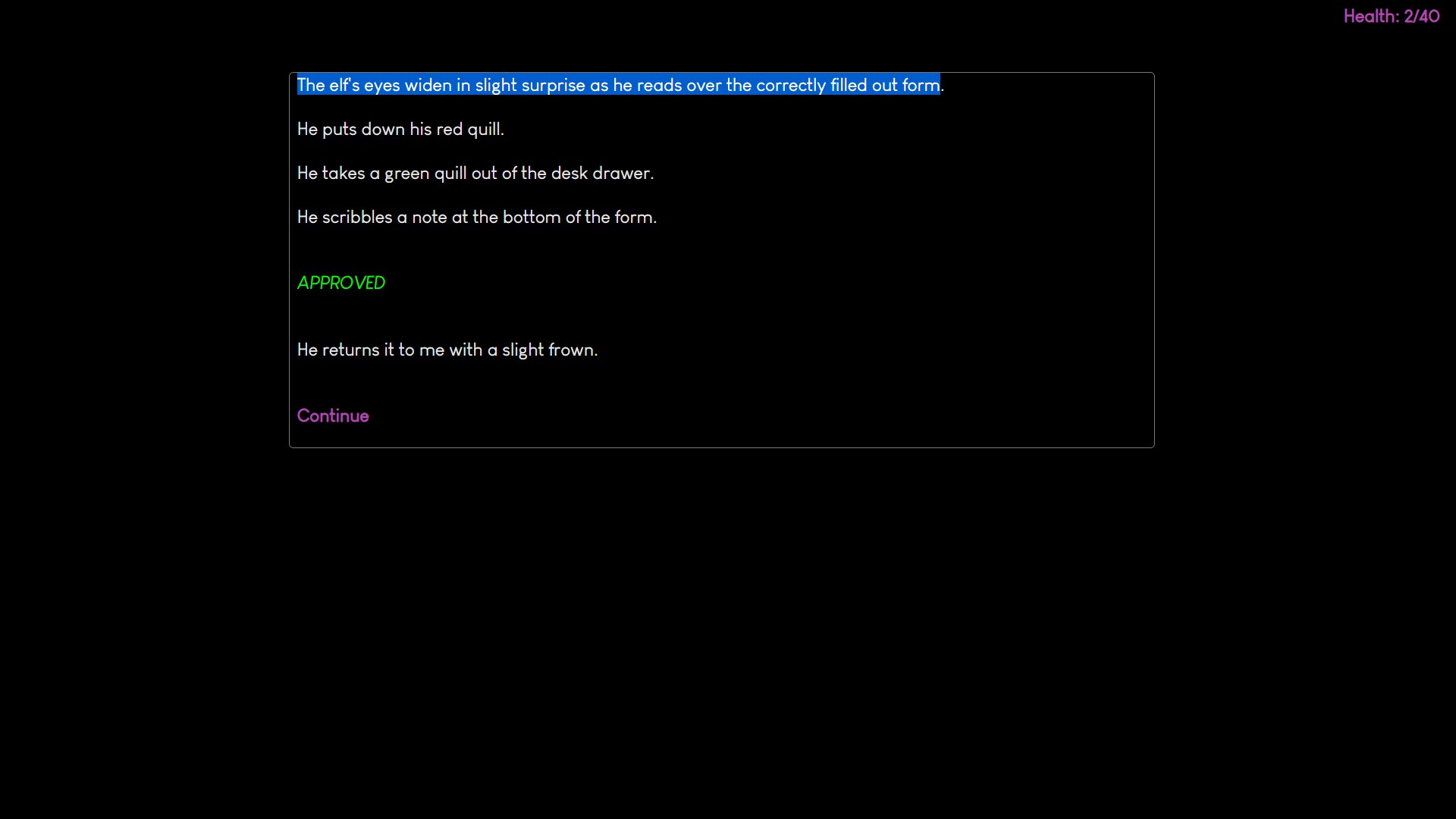
Part 2 – Ascending
Here, the game opens up once again, revealing a few more areas.
I am not a big fan of this part, however. I feel like there was a significant design problem in that most areas are very opaque early on. Where part one moved fairly smoothly (though with lots of puzzling and thinking to be done), most of the areas of part 2 were quite cryptic, which could halt your progress almost entirely.
Here I’d recommend using the Discord for tips, honestly – since the whole problem is one of bootstrapping. Once you find the contrived clue, you can then puzzle out the rest and enjoy the experience just as part one. But that clue often relied on brute-forcing through ambiguous words, which was frustrating and added too much uncertainty.
Moreover, a lot of the content here is optional, and I actually finished the game by skipping most of it (at around 20 hours? and later came back for another 10 for a proper playthrough).
Again – the problem is to understand how to interact with the basic elements of the new areas. Once that’s done, the design is good again, for the most part.
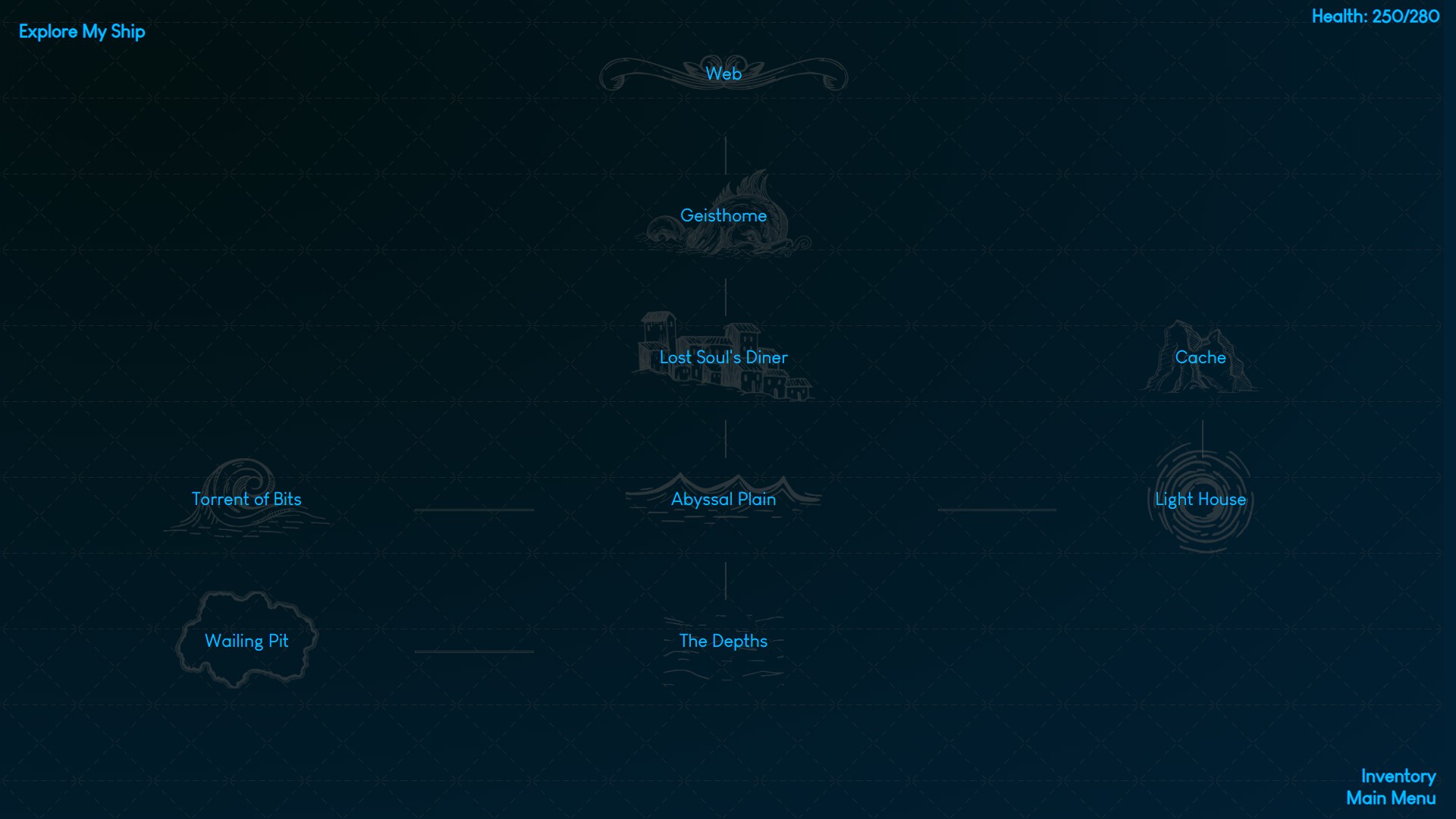
Part 3 – Endgame
This is where it all leads up. This is where you face your fears, where you gather your friends, where organize all the memories you’ve collected throughout the game.
This is actually a very beautiful part of the game, and there are many resources at your disposal, depending on how much of the “optional” content you’ve done.
The only problems is that it is easy to make mistakes early on, or uninformed choices, that will hurt you only many hours later. In particular, in the use of the “essences”, since you can be wasteful with them, and their number is limited.
The biggest problem is that there are many “tiny” puzzles, and the same items can solve several of them. Mapping what solves what can become extremely laborious and reliant on repeated reloading which is honestly very unsatisfying. In fact, I actually enjoyed the area much more the first time, since I didn’t have as many resources, so puzzling it out was more focused. I didn’t solve as many of the tasks, but I solved enough to beat the game; the second time I was trying to go as high as possible, and was soon overwhelmed by the possibilities.
I still loved the area, though. It is a very fitting end for your long journey and makes it all worthwhile.
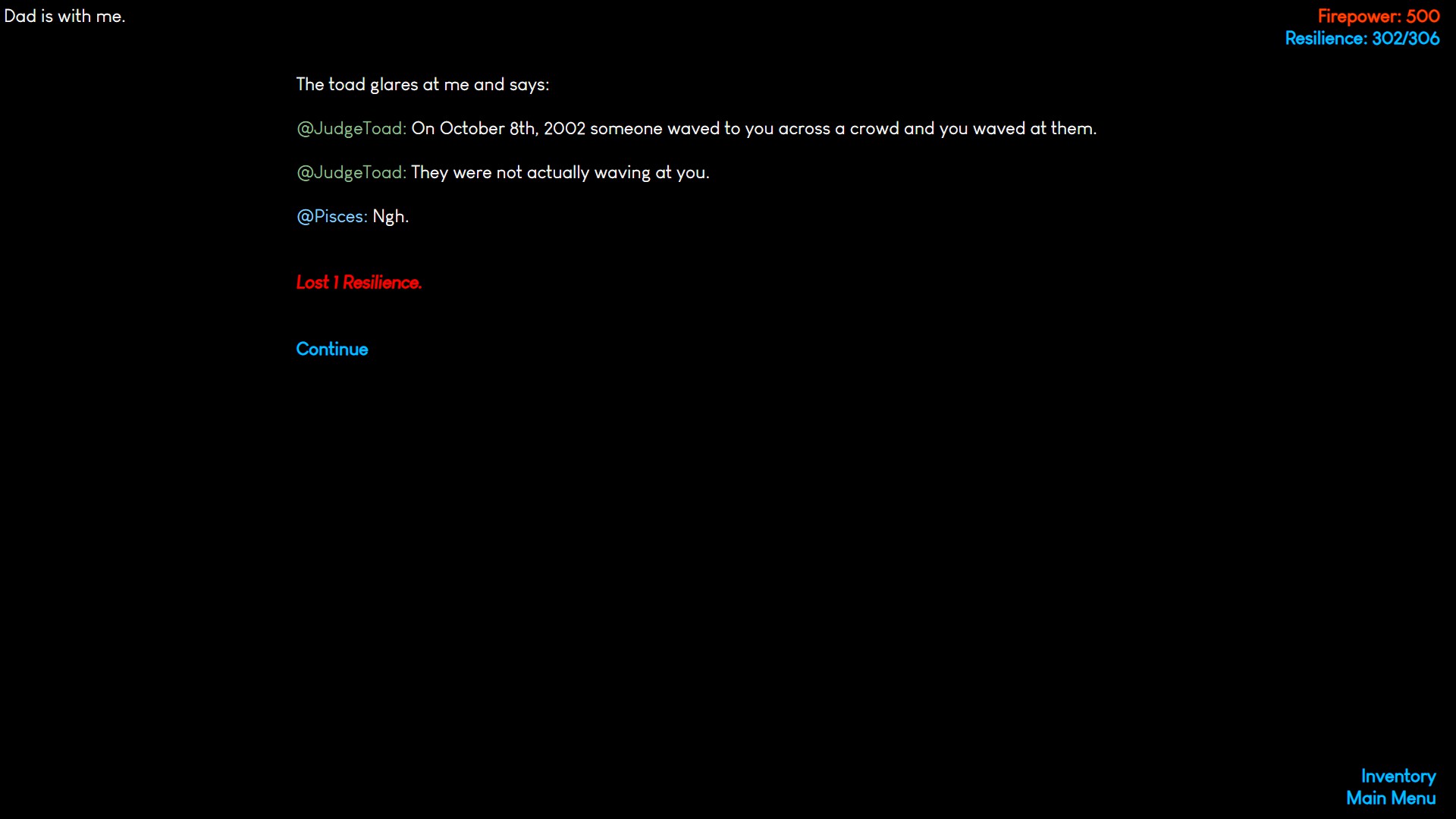
Play with a Friend!
The linguistic nature of the game is both a good and a bad thing. The bad thing is that you can get stuck on semantic quibbles and some words can be misleading in unpredictable ways.
For this reason, I’d recommend playing this with a friend! Seriously. The amount of cataloguing and writing required would make for a nice experience with another person, and there would always be more room for different interpretations.
Preferably in the same room, but I suppose it could work online as well.
Cataloguing
This may seem a weird point to make, but one of the aspects I most loved about the game was the cataloguing. This is such a rare thing for games to demand, and I find it a terrible loss to the medium.
Take modern RPGs, or all the Assassins’ Creed games (and derivatives), where you are given the map, and every quest is marked there and you don’t need to pay any attention at all to anything. You’re given your GPS heading and on you go.
This also influences many other of the games’ systems. Take Pillars of Eternity – the game has a herb gathering system, which is used to brew potions; but you never need to know which herb you’re picking, where any herb grows, or what their use is. As you’re adventuring, you just press Tab to highlight herbs and click on the ones that appear on the screen. Later on, you brew whatever potions you can, without having to know the recipe or worked for it.
Cataloguing makes for a much richer experience, if used well, which Open Sorcery: Sea++ definitely does.
It’s not just about drawing the maps, but learning where resources are, noting little details that will turn out to be important clues when you talk to another character, and so on.
It’s amazing to me how much richer a text-based game turns out to be. Games’ technology has evolved immensely, but it seems that the experience is generally poorer. Two of the games I most enjoyed playing for the first time have been Fallout (1 and 2) and Ultima: Underworld, and this is no nostalgia, since I didn’t play any similar games before.
There is a joy in the unknown that modern games ignore. Everything is so familiar and you no longer need to pay attention. It’s extremely important when games like this come up which demand you to write and think again!
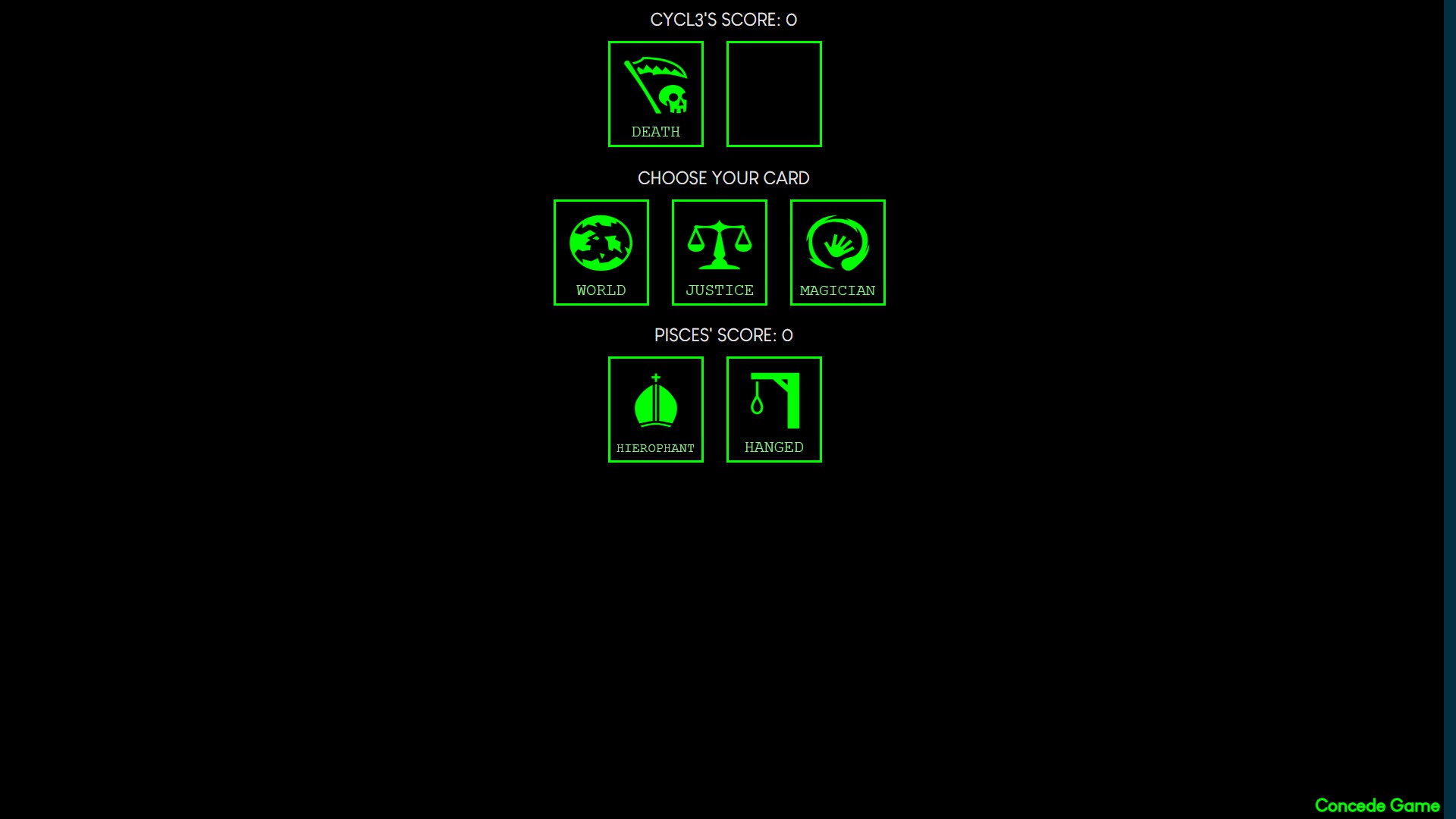
Originality or a Different Fountain?
One other point I want to mention (and this is not about the game itself).
This game was almost transformative, to me. I really didn’t expect to enjoy it nearly as much (I took the review as a potentially cool little distraction, since the first game was about 5 hours long), and it really forced my mind to go to different places, in the context of games.
What I don’t know is whether this game is a great example of text-based adventure game (of the non-LucasArts kind), or it is actually a fairly bland example. It cites InfoCom games (which I have heard about but never played) like Zork and Wishbringer. I am definitely going to try some of them now. But I also looked into InfoCom, and found a game called Bureaucracy. This sounds very much like the “interlude” area of the game!
And this is what I mean – I can’t judge how new the game really is, or how good, simply because it comes straight out of left field. It drinks from a different fountain of inspiration, one with which I am not familiar!
This is not a criticism of the game, obviously. In fact, in my personal case it is an item of praise, since it opened up my mind and I’m looking forward to trying out some of the older games that inspired it.
That said, genre veterans may have a very different view of the game, in the end.
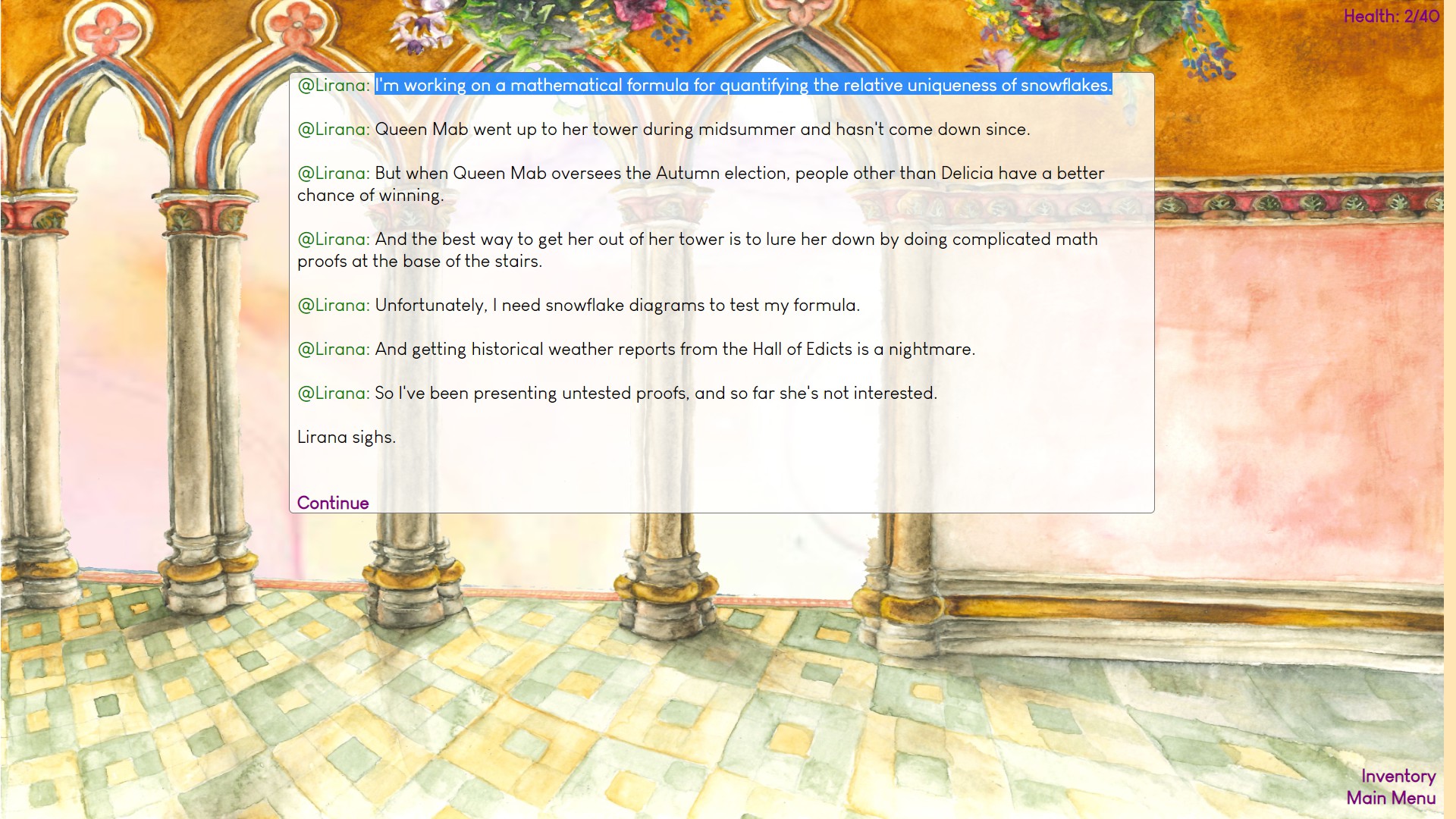
Notes on the Writing
As I said, the writing is great. I actually expected it to be much nerdier (given the name and theme of the game) than it is, and that’s a good thing!
It deals mostly with dark themes, but it does so in a consistently compassionate and, when appropriate, light-hearted and amusing game. It also manages to contain lots of local color, with different areas of the game feeling truly different, without any of it being overly flowery (I played Pillars of Eternity right before this and I find OS:S++ much more enjoyable).
It also features a “crinkling eyed smile”, which is a rare and most wholesome expression (I’ve only encountered it in a Kenji Miyazawa’s story but I find it very moving, for some reason).
The game is sprinkled with tiny infusions of grace, there are many small sentences that elevate the writing in Open Sorcery far beyond most other games.
The only big problem I had with it was in a couple of areas where the game took a definitive stance on the current social politics in a rather … posturing way? It happened in two different scenes.
One, and the worst to me, was the scene about Alan Turing and Ada Lovelace. For some reason, the game decided that students should learn about Ada Lovelace instead of Alan Turing (almost exclusively) because she had claims to what can be considered the “first computer program” (if in a narrower way), and, of course, because she was a woman. The biggest problem, however, is that in this rewriting of history, Turing’s only role was that of enduring being a gay man in early and mid 20th century Britain. It feels extremely wrong and problematic when people do deep and valuable work and are only read in terms of their gender and sexual orientation… I’m all for giving Ada all the credit she is due, but this is not the way to do it.
The second was a general portrayal of capitalism and big companies as so cartoonishly evil that no discussion of problems and solutions is possible – really, the way is to incite the mob to destroy and all the problems will go away.
Also, I am not a big fan of the big themes of the game. There is too much trauma and fragile relationships, of the kind I am not sure we should focus on? It’s good to talk about once in a while, but there are too many games about it and it seems people are defining themselves more and more by inner struggles. I feel like we should be creating out, not in, but hey. I prefer Jonas Kyratzes’ broader themes in this respect.
Anyway, there is room for it all. In general, the game’s message is very good. It is compassionate, tolerant, and looks up. That’s something I’d love to see more of in games! (I mean, I can’t remember a single genuinely good character or purpose in Pillars of Eternity…)
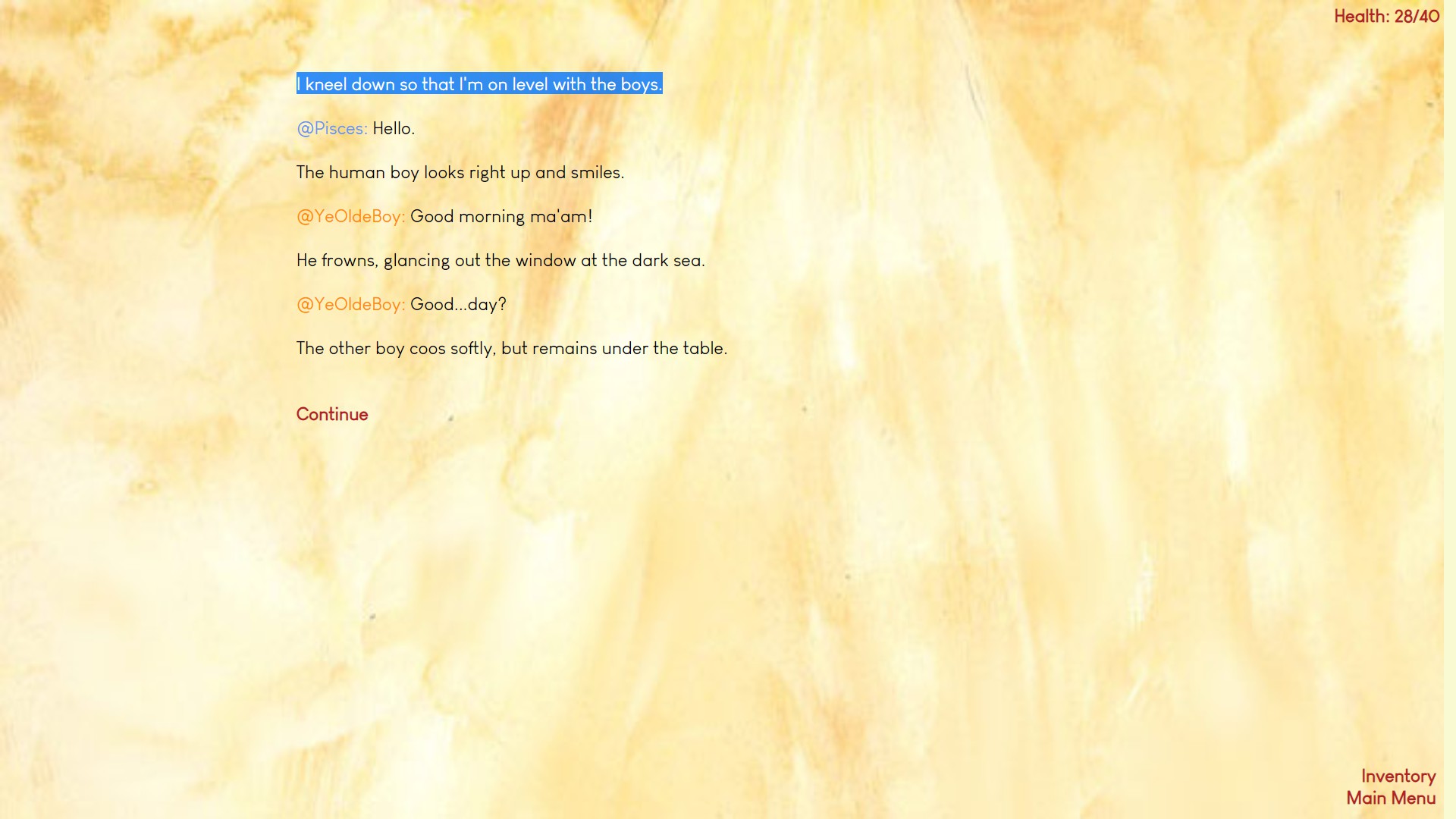
Conclusion
This review was a bit more rambly than usual, but I hope I conveyed my love for the game adequately enough.
Open Sorcery: Sea++ is a combination of extremely good and extremely different (from my usual stuff) that I’ll probably need a few months to articulate precisely what makes me like it so much, and also play the games that inspired to make a mental model of the whole thing.
I have played very few text-adventure games, and don’t enjoy the LucasArts style of point-n’-click adventures games, but this somehow hit all the good spots and was thoroughly engrossing for the 30 hours I spent with it.
If you like to take notes and work through many different puzzles, definitely give this a go. It may take a couple of hours to get going (since there are many different mechanics at play), and the last third of the game didn’t feel as well designed, but it is still a very important and unique game that I’d heartily recommend to just about anyone!










